MATERIAL ASSISTANCE FOR HOME MEDICAL DIAGNOSIS
Avoid displacement and
inevitable long waits
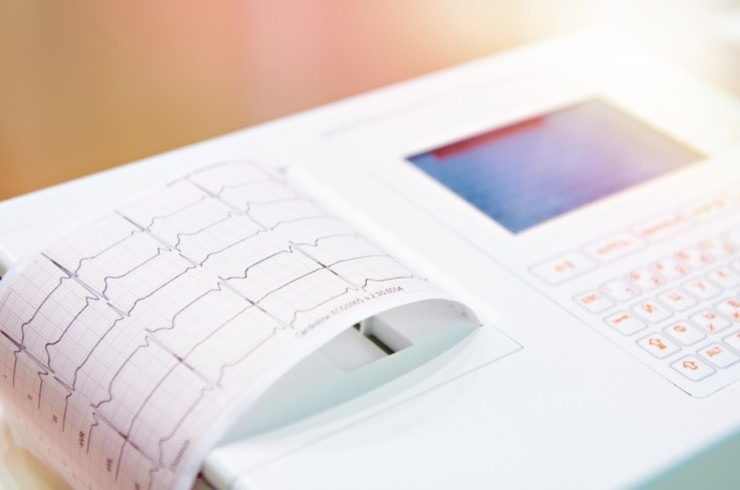
CARDIAC AND RESPIRATORY HOME EQUIPMENT
- This service at home respects the rhythm of the person, it will avoid the displacement and the inevitable expectations of the hospitals. For all these reasons, these services are offered in the comfort of your home.
- The SPCV nurse travels to your home to do these tests and she will give you the result or the route on the spot to give it to your family doctor for interpretation and support.
- This act is the responsibility of our customers or private insurance of the latter, check with your insurer to know your coverage.
- The services offered by SPCV are the same as those given by the hospitals and done by a qualified nurse from SPCV
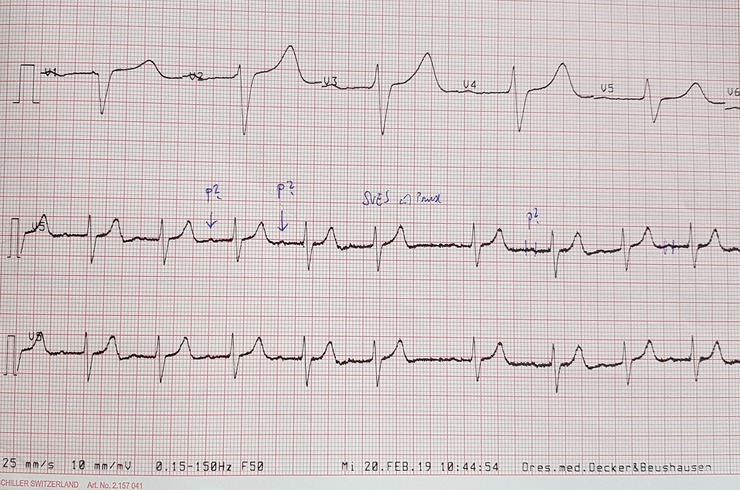
EXAMS SUPPORTED BY SPCV COMPANY
Contec 1200G ECG
The Contec 1200G ECG is an electrocardiograph that can simultaneously collect a 12-lead, 12-channel ECG signal. It can record, display ECG waveform, measure and diagnose automatically. It provides high quality ECG waveform.It allows the 12-lead and 12-channel ECG to be displayed on the same screen, which is convenient for high-contrast diagnosis.
The built-in memory of this ECG can store up to 1000 ECGs, convenient for case review and statistics.

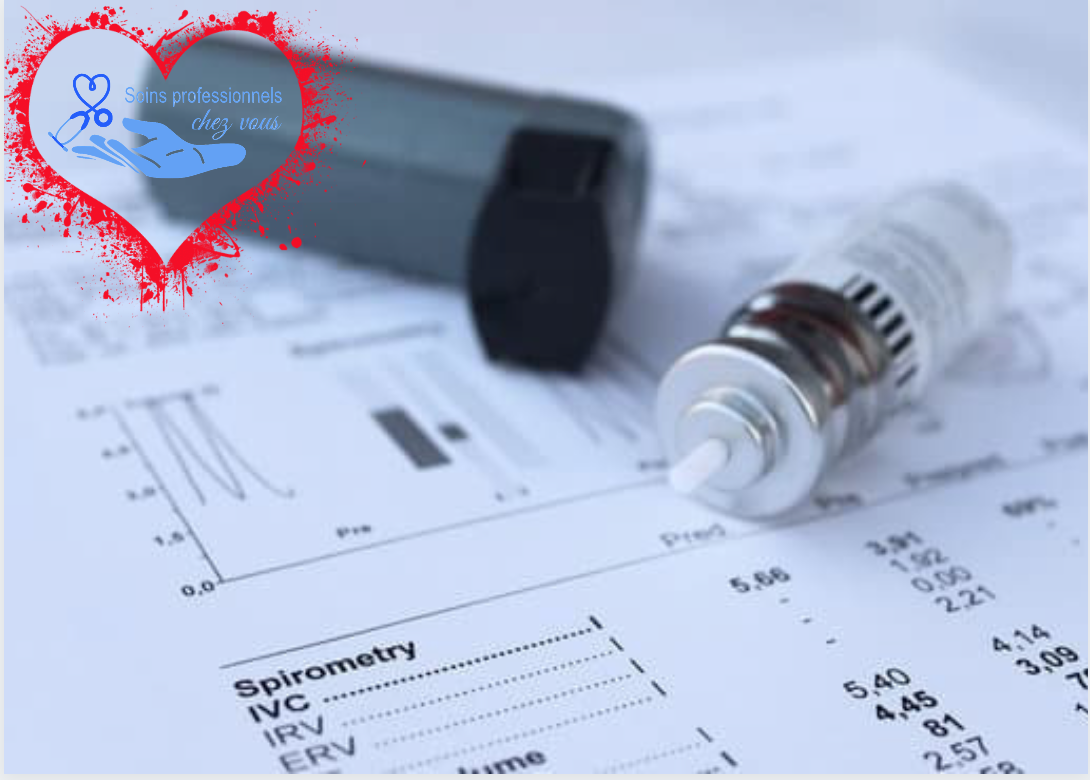
Spirometry
This is a very common diagnostic test. It basically tests whether a patient has COPD (chronic obstructive pulmonary disease) or asthma.
This test is painless and requires between 20 or 30 minutes. This test is intended for smokers or ex-smokers as well as people with asthma or who are suspected of being so.
Ambulatory Blood Pressure Measurement (MAPA)
This is a blood pressure monitor that the patient wears for 24 hours to determine if the patient needs treatment to control their blood pressure.
The time required for installation of the device is 10 minutes.

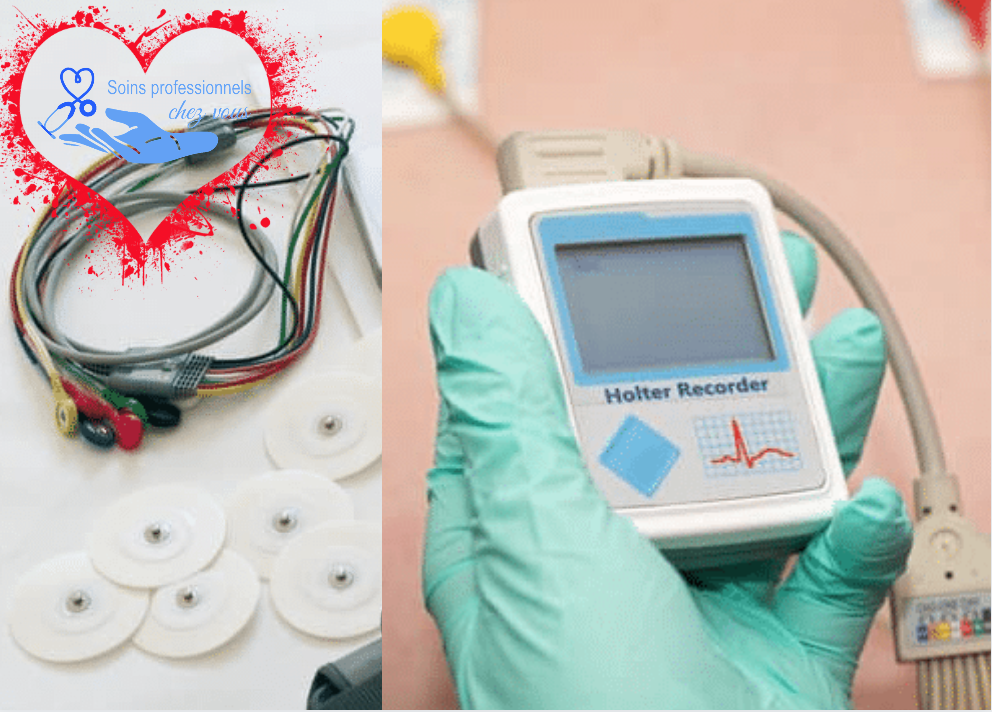
Holter (created par Dr. Norman Holter)
This is a portable device that allows the recording of the electrocardiogram for a period of 24h or 48h.
The time required for installation of the device is 10 minutes.
BpTru blood pressure monitor for home
It is well known that blood pressure varies depending on several factors in both normal individuals and those with hypertension. The stress induced by the medical visit is one of these factors; this can lead us to falsely diagnose hypertension, this is called the effect of white lab coat”. One way to get a patient’s “real” blood pressure is with the BpTru, which differentiates patients with lab coat hypertension from true hypertension.Currently, in Canada, the automated device used to avoid the “lab coat effect” and to take “real” blood pressure is the BpTru.BpTru can measure blood pressure 6 times automatically, measurements are taken every 1-2 minutes. After removing the first blood pressure measurement taken in the presence of a healthcare professional, the BpTru calculates the average of the next 5 measurements taken while the patient is alone, at rest and in the comfort of home. The result obtained with a BpTru is more accurate than the measurements taken with a stethoscope and a conventional blood pressure monitor.

It can be concluded that the BpTru is very useful because it better reflects the “real” blood pressure of the patient than that taken directly by the doctor or another professional in the clinic.
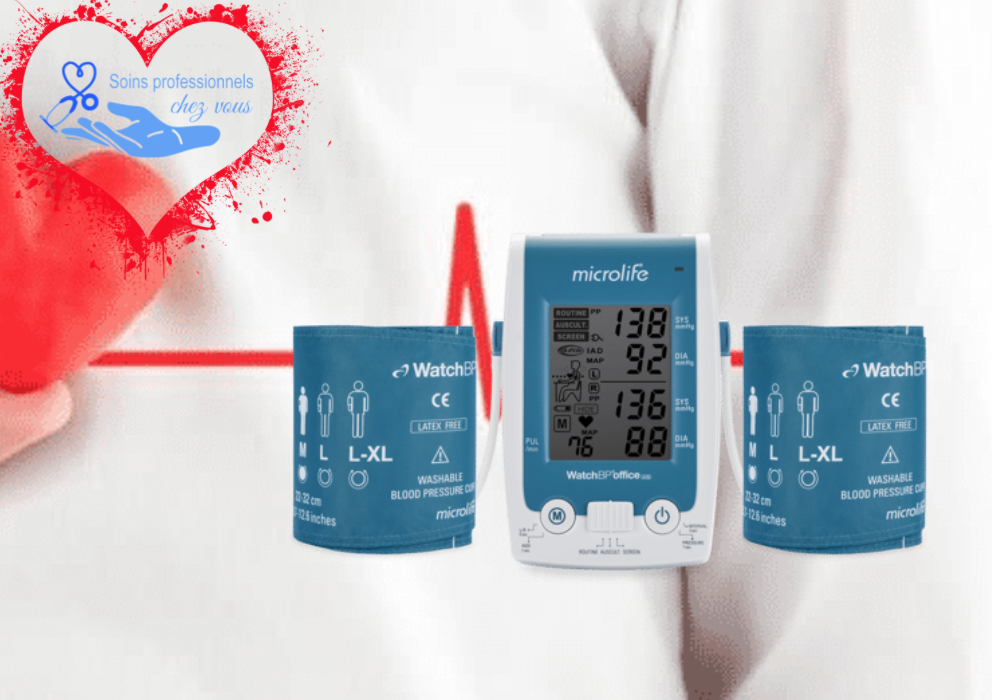
WatchBP Office ABI – A Cardiovascular Screening Solution
The WatchBP office ABI is a smart blood pressure measurement. The Watch Office ABI is a professional automatic blood pressure monitor that allows you to:
– Quickly and accurately determine the ankle brachial index (ABI)
– Take measurements on both arms in order to determine and calculate the difference in blood pressure between the 2 arms (IAD) with the highest reliability
– Monitoring the blood pressure and can also measure mean arterial pressure (MAP).
– Detect atrial fibrillation (AF) with high reliability and high precision (sensitivity 98%, specificity 92%), hence the risk of Cerebral Vascular Accident (Stroke).
The ABI, IAD and AFIB parameters are important elements in the prognosis of cardiovascular pathologies. Also, ABI can be used to assess peripheral arterial disease. All of these parameters make WatchBP office ABI a tool of choice for diagnosing stroke risk and screening for peripheral arterial disease (PAD). The software integrated into all WatchBP devices is intuitive and allows for easy data transfer and analysis. The result will be sent to your doctor.
Peripheral Vascular Disease (PVD), or Peripheral Arterial Disease (PAD)
Peripheral vascular disease (PVD), or peripheral arterial disease (PAD), results in a blockage in the arteries of the lower limbs. This results in a poor blood supply to the legs and feet which can lead to pain, fatigue or limping (Pain in the lower limb causing difficulty in walking). In more severe cases, these blockages cause gangrene to end up with amputation.
The cause of these blockages is atherosclerosis or ((hardening)) of the arteries. This is the same condition that causes heart attacks and strokes. Atherosclerosis is linked to smoking, diabetes, high blood pressure, high cholesterol, aging, and hereditary factors. Some of these factors can be controlled or treated, and others cannot.
In the majority of cases, MVP is asymptomatic, under-diagnosed, under-detected and under-evaluated. Asymptomatic MVP is best detected by measuring the tibio-humeral index.
With or without symptoms, a patient with MVP is 4 times more likely to have a Myocardial Infarction and 2 to 3 times more likely to have a stroke.
A Doppler probe exam combined with the Edinburgh Questionnaire will help your doctor to diagnose and grade the severity of PVP.
The SPCV team can help diagnose peripheral vascular disease (PVD) or peripheral arterial disease (PAD), by performing:
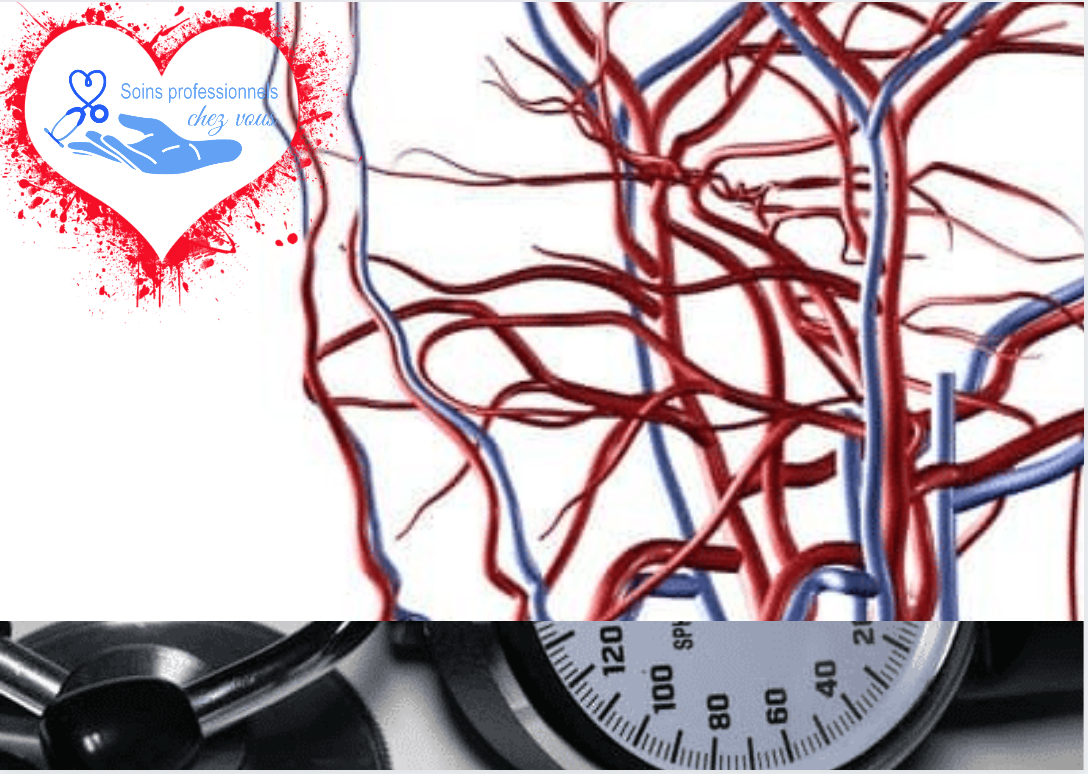
– The Edinburgh Questionnaire, it can help diagnose arterial claudication in patients suspected of having PAD.
The Edinburgh Questionnaire for diagnosing PAD is 91% sensitive and 99% specific.
– Measuring the tibio-humeral index with Doppler makes it possible to calculate the severity of PAD.
The Edinburgh Questionnaire and Doppler will be performed in the comfort of your home by the SPCV team and the result will be sent to your doctor.

WatchBP office FIBA – A Cardiovascular Screening Solution
The WatchBP office FIBA is a smart blood pressure measurement. It allows monitoring of blood pressure and detection of atrial fibrillation (AF) and therefore the risk of Cerebral Vascular Accident (Stroke). The WatchBP office FIBA is a blood pressure monitor with two cuffs that allows:
– Take reliable measurements of your blood pressure and the mean arterial pressure (MAP) at home, while avoiding the white coat syndrome
– To be able to reliably detect cardiac arrhythmias (atrial fibrillation)
WatchBP AFIB technology detects atrial fibrillation (cardiac arrhythmia) with high accuracy (Sensitivity 98%, specificity 92%).
– due to the design of taking the pressure with two cuffs to take a simultaneous measurement in both arms in order to assess the difference in blood pressure between the two arms.
– The auscultator mode is, for example, ideal for the elderly, those suffering from obesity and those with arrhythmias.
The WatchBP AFIB is an important tool in the prevention and prognosis of cardiovascular pathologies; they make the WatchBP office AFIB a tool of first choice in the diagnosis of risks. The SPCV team will be happy to use this device in the comfort of your home. The software integrated into all WatchBP devices is intuitive and allows for easy data transfer and analysis. The result will be sent to your doctor.
Semmes-Weinstein Monofilament Test
Diabetic neuropathy is a complication of diabetes that occurs especially in people with diabetes that has progressed for many years.
Diabetic neuropathy occurs earlier when diabetes is poorly balanced. It is at the origin of disorders located in the legs. The feet are very often affected, thus lose part of their sensitivity and then become more exposed to injuries or complications which can get worse and become infected and lead to amputation.
Using the 10g Semmes-Weinstein monofilament is a simple and inexpensive method to detect disorders of the superficial sensitivity of the diabetic’s foot.
This test, which must be performed at least once a year, is part of the monitoring of a person with diabetes. The international recommendations concerning the prevention of diabetic’s foot specify the importance of performing this simple, non-invasive and easily reproducible test to test superficial tactile sensitivity.
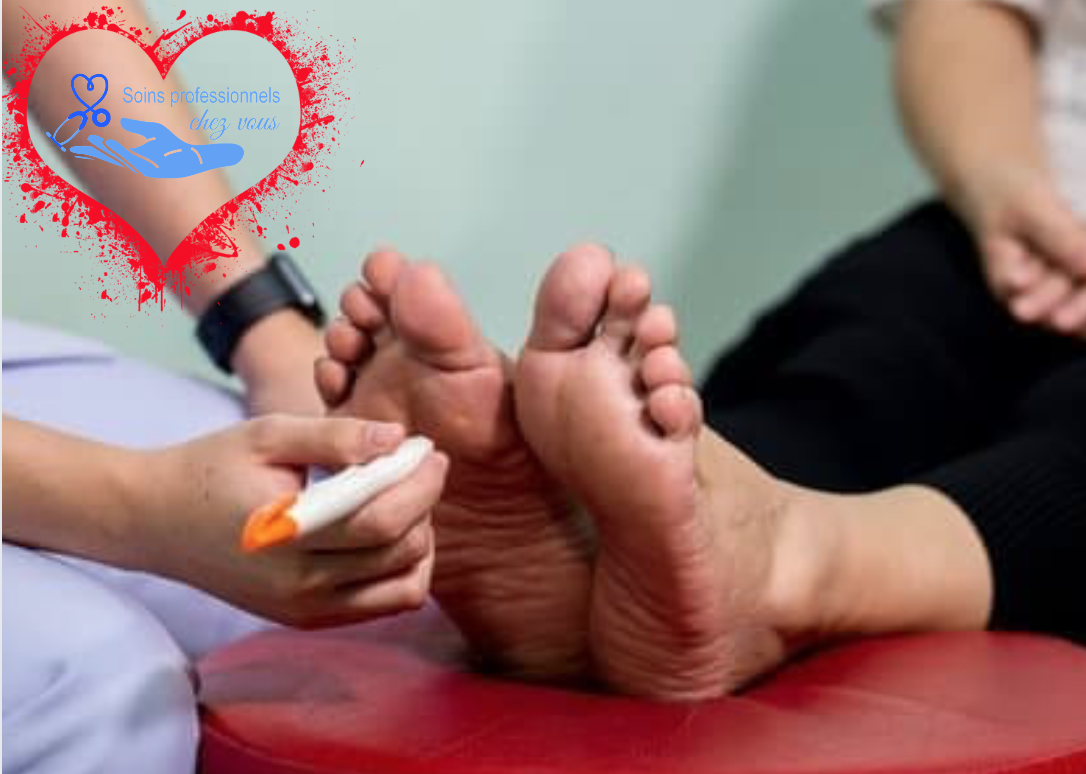
The SPCV team is ready to do the Semmes-Weinstein monofilament test at your home and send the result to your doctor.
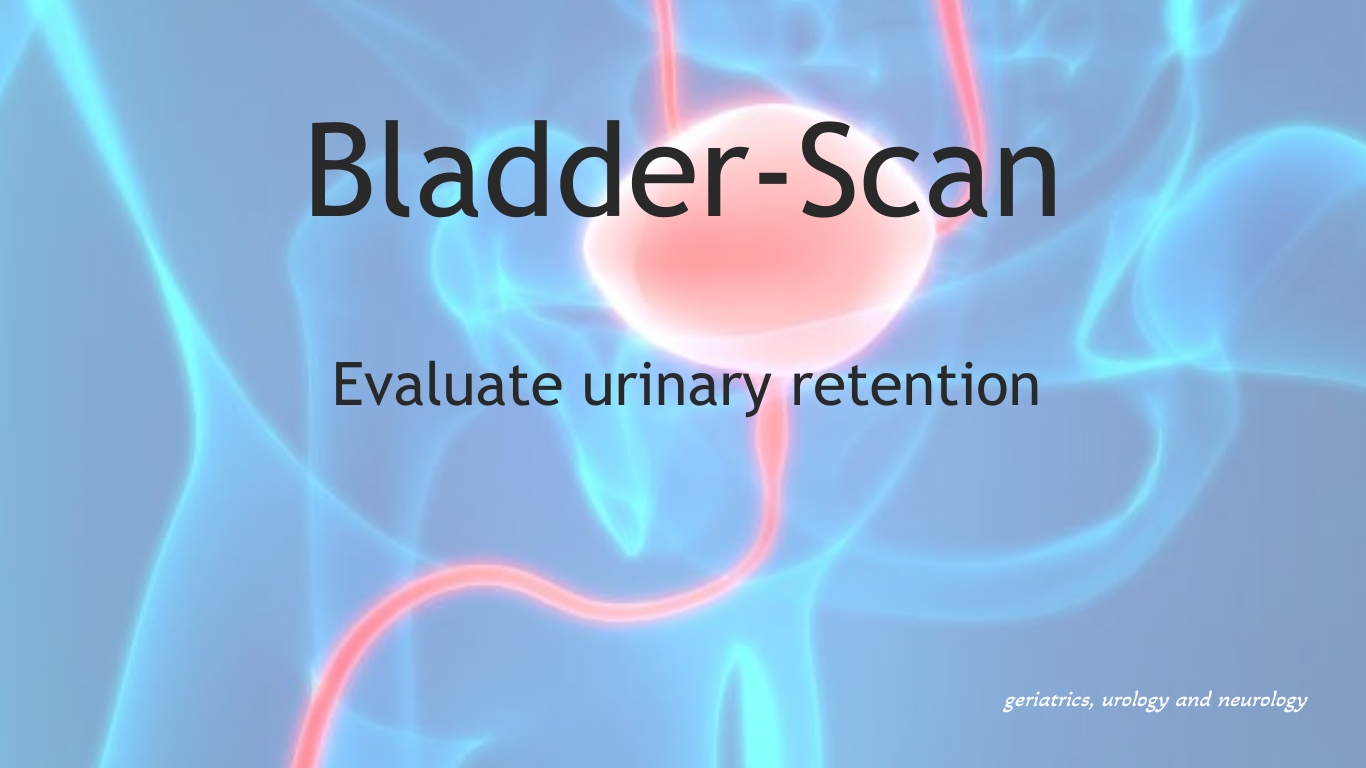
Bladder-Scan
If there is a problem with the bladder, the Bladder-Scan measures the volume of urine in the bladder and the residue that remains after urination, in order to assess urinary retention.
This technique is non-invasive, that is to say, no probe or other medical instrument is introduced inside the body. Thus the Bladder-Scan does not cause trauma or pain and even less urinary tract infections.
The SPCV team can perform this examination at home in the comfort of your home, the results are reliable and can be sent to your doctor.
The Bladder-Scan is used mainly in the elderly, as they are at the greatest risk of urinary retention and recurrent urinary tract infections due to their advanced age. However, the Bladder-Scan can be used in other areas, such as geriatrics, urology and neurology.
